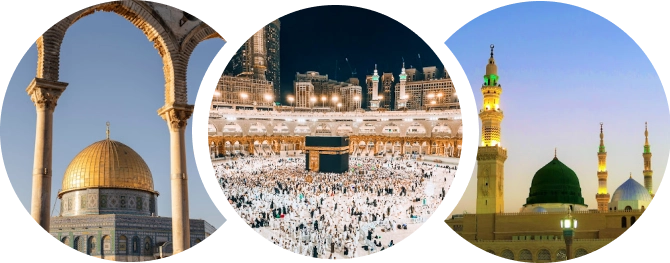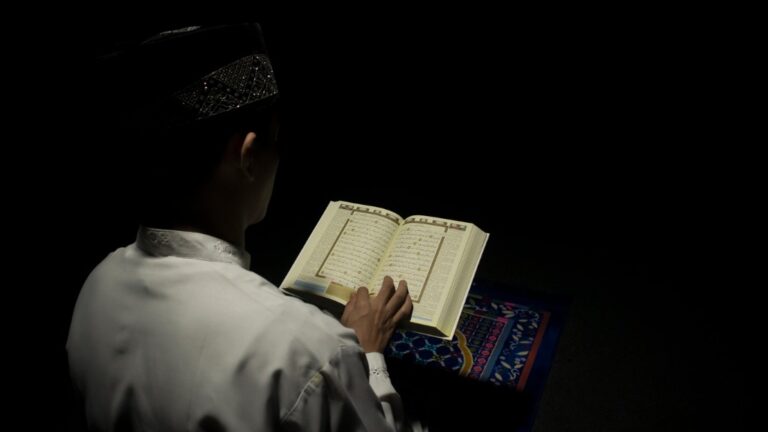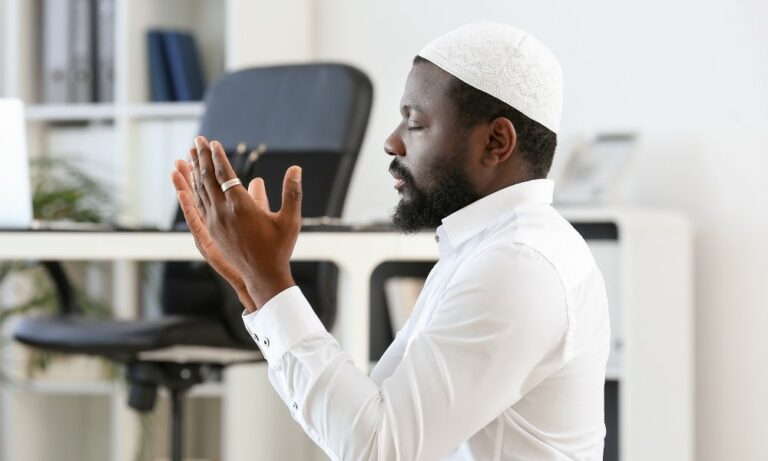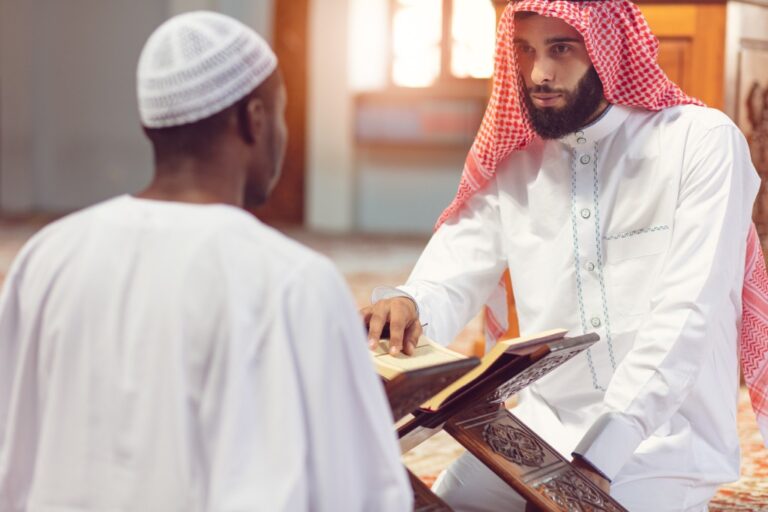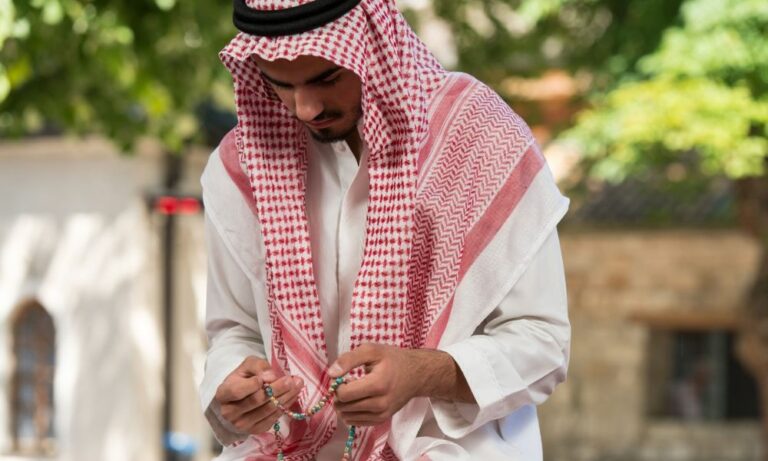How to Perform Maghrib Prayer: Ultimate Guide to Perfecting Maghrib Prayer!
If you’re new to Islam and wondering how to perform the Maghrib prayer properly, you will soon get all the answers.
Salat al-Maghrib, one of the five mandatory prayers, is an essential part of your daily worship routine. This comprehensive guide will simplify each step for you that is performed in Salah.
This crucial knowledge is just moments away! Let’s dive in.
Understanding Maghrib Prayer
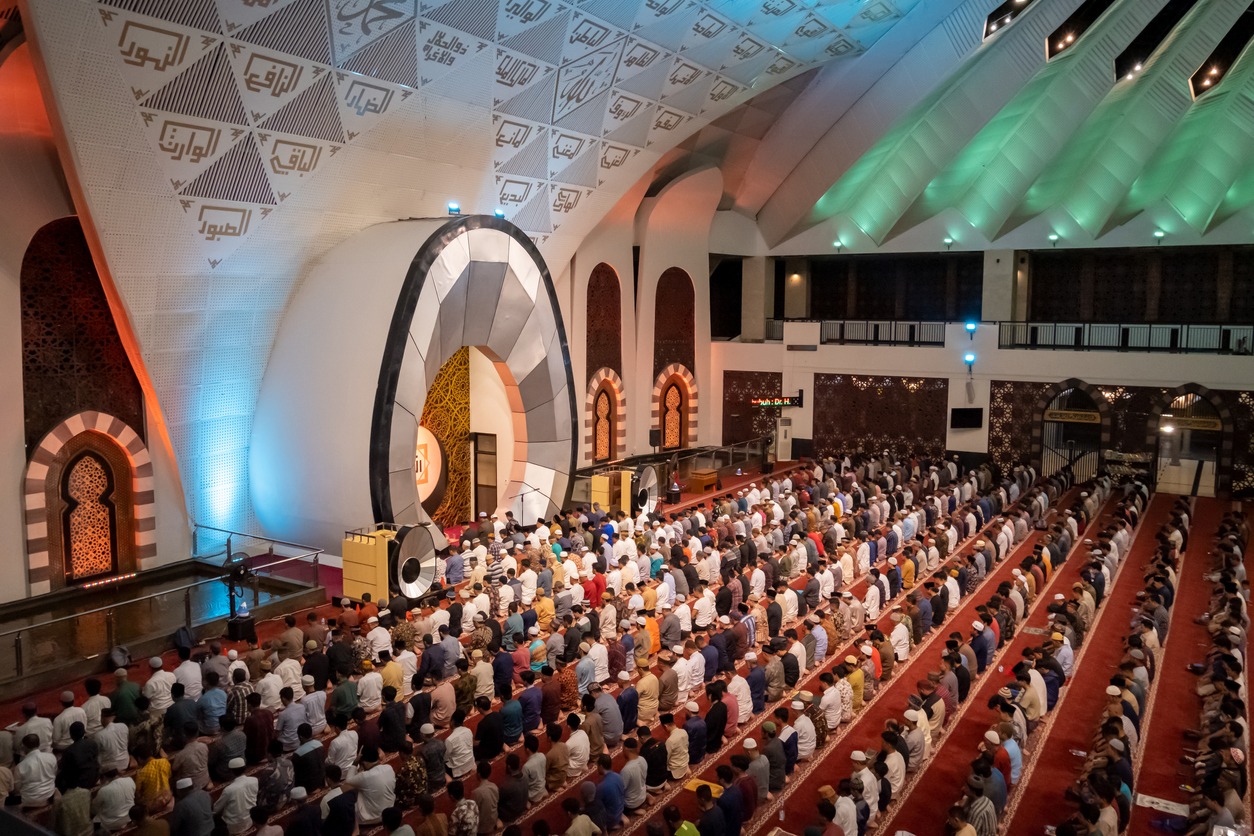

Maghrib prayer is an important component of the Islamic faith, as it is one of the five obligatory prayers.
Definition of Maghrib
The term “Maghrib” is essential in Islam because it is derived from an Arabic word that means “sunset.” It not only denotes a specific time of day but also one of your five obligatory prayers.
You have to perform this prayer at sunset, which marks the end of the day. The primary purpose of Maghrib prayer is to remind Muslims worldwide of their obligation to Allah.
Time for Maghrib Prayer
Determining the precise time for your Maghrib prayer is critical in the Islamic faith. In general, your fourth obligatory daily Salah or Namaaz begins shortly after sunset.
Unlike the Dhuhr and Asr prayers, which can be performed over a more extended period of time, you are encouraged to pray the Maghrib prayer as soon as the call to prayer (Azan) is issued.
It is the only prayer that falls immediately after sunset and has only three Fard Rakahs.
You can use an astronomical timetable to determine the exact sunset time for the start of your Maghrib Prayer. This method combines Quranic observance with a connection to nature’s rhythm, which is a fundamental principle in your Islamic rituals and purification practices.
As a result, it is critical for you to understand your local sunset times to not only follow religious protocols but also to connect deeply with Allah SWT through timely prayers.
Number of Rakats in Maghrib
Maghrib prayer, an essential part of the Islamic faith, consists of a specific number of rakats that must be meticulously performed. Traditionally, three rakats are required for this sunset prayer.
You begin your Salat al-Maghrib with two Nafl rakats, followed by three Fardh (mandatory) rakats.
You can increase your spiritual merit by extending your Salah or Namaaz to five or seven rakats by adding two optional Sunnah prayers after completing the mandatory parts.
You must maintain respect and focus throughout the sequence, strictly adhering to these steps for your Maghrib Prayer Sunnah.
Preparations Before Maghrib Prayer
Before performing the Maghrib Prayer, it is required to perform ablution (wudu), choose a suitable location for prayer, and be aware of the timing for the Maghrib Prayer.
Performing Ablution (Wudu)


Performing wudu is essential before every prayer. Here are the steps:
- Start Wudu by saying “Bismillah” (In Allah SWT’s name) and wash your hands up to the wrists three times. Sunan Abi Dawud 101
- Rinse your mouth three times, cleaning all areas within it.
- Cleanse your nostrils by sniffing water into them three times and expelling it out.
- Wash your face from the top of the forehead to the bottom of the chin, and from earlobe to earlobe, ensuring that all areas are covered.
- Wash your arms up to and including the elbows, starting with the right arm followed by the left arm.
- Wipe your head by wetting your hands and passing them over the entire head once.
- Cleanse your ears by wiping behind them with wet fingers, using your index finger for the right ear and your thumb for the left ear.
- Finally, wash both feet up to and including the ankles, starting with the right foot followed by the left foot.
Reference: SAHIH BUKHARI, BOOK 4: Ablutions (Wudu’) (iium.edu.my)
Timing of Maghrib Prayer
In the Islamic faith, you perform the Maghrib prayer at a specific time each day, marking the end of the day. It begins shortly after sunset and lasts until the twilight fades completely.
The timing of the Maghrib prayer varies depending on your location and the season. As a Muslim, you should use a timetable to determine the exact time for Maghrib prayer, ensuring you do not miss this vital obligation.
It is critical to understand that rushing through prayers is considered a sin in Islam, so taking your time during Maghrib prayer is highly encouraged. Remember to perform it with focus and devotion, giving it the importance it deserves.
Bonus Tip: Here’s a website you can use for accurate prayer times: www.prayetimes.org
Required Attire and Location for Prayer
When performing the Maghrib prayer, Islam encourages you to dress modestly. Men should cover their navels to their knees, while women should cover their entire body except for their hands and faces.
Wearing appropriate clothing during prayer fosters a respectful and focused environment. The prayer location should be clean and devoid of impurities. During prayer, Muslims seek a quiet and peaceful place where they can face the Qibla, the direction of Mecca’s holy mosque.
This ensures a sense of unity with fellow worshippers around the world.
Detailed Steps to Perform Maghrib Prayer
Performing Maghrib prayer involves several steps, such as the initial Takbeer and Qiyam, reciting the Quran, bowing (Ruku), prostrating (Sujud), sitting between two Sujuds, and concluding with Tasleem.
Read on to learn how to perform each step correctly and establish a fulfilling prayer routine.
Initial Takbeer and Qiyam


The Maghrib prayer begins with the initial Takbeer and Qiyam. In this step, the worshipper raises their hands to their ears, saying “Allahu Akbar” (meaning “God is the greatest”) as they start their prayer. Book 2, Hadith 155
Raising your hands means focusing solely on Allah SWT and leaving worldly distractions behind. You then stand upright, facing the Qibla (the direction of Mecca’s Holy Mosque), ready to begin your devotion.
You establish a strong connection and mentally and spiritually prepare yourself for this sacred act of communication with Allah SWT by beginning with a powerful declaration and standing tall before Him.
Recitation of Quran
In the Maghrib prayer, reciting the Quran holds significant importance. After completing the initial takbeer and standing in qiyam, it is time to recite verses from the Holy Quran.
Before reciting Al-Fatiha and the Quranic verses, it is recommended to recite The Dua of Istiftah, which is a Sunnah of Prophet Muhammad PBUH.
Dua of Istiftah .سُبْحَانَكَ اللّٰهُمَّ وَبِحَمْدِكَ ، وَتَبَارَكَ اسْمُكَ ، وَتَعَالَىٰ جَدُّكَ ، وَلَا إِلٰهَ غَيْرُكَ Subhanakallahumma, wa bihamdika tabarakasmuka wa ta’ala jadduka wa la ilaha ghairuk (Glory and praise be to You, O Allah. Blessed be Your name and exalted be Your majesty, there is none worthy of worship except You.)” Sunan an-Nasa’i 900
Surah al-Fatiha is an important part of every rakat of Maghrib prayer. This chapter opens the door to communication with Allah SWT, acknowledging His role as Lord of all worlds and seeking guidance on the straight path. Book 2, Hadith 172
Prophet Muhammad PBUH has also declared that whoever doesn’t recite Surah Al-Fatiha then his prayer would be invalid:
مَنْ صَلَّى صَلاَةً لَمْ يَقْرَأْ فِيهَا بِأُمِّ الْقُرْآنِ فَهْىَ خِدَاجٌ – ثَلاَثًا – غَيْرُ تَمَامٍ ”
If anyone observes prayer in which he does not recite Umm al-Qur’an (Surah-Fatiha), It is deficient [he said this three times] and incomplete.
Furthermore, it is critical to maintain focus and concentration while reciting Surah al-Fatiha and other portions of the Quran during prayer, immersing oneself in its deep meanings.
Ruku (Bowing)


One of the most important actions during the Maghrib prayer is Ruku, or bowing. This position is performed following the completion of Surah Al Fatiha and Quranic recitation. After saying Takbir “Allahu Akbar,” you enter into Ruku, where you place your hands on your knees and bow down in humility before Allah SWT.
During this posture, it is critical to maintain proper balance and a straight back. As the Prophet Muhammad PBUH warned us in the following hadith:
“ لاَ تُجْزِئُ صَلاَةُ الرَّجُلِ حَتَّى يُقِيمَ ظَهْرَهُ فِي الرُّكُوعِ وَالسُّجُودِ ”
A man’s prayer does not avail him unless he keeps his back steady when bowing and prostrating.
Additionally, one should recite “Subhana Rabbi Al Adheem” (Glory be to my Lord Almighty) three times while in Ruku as an act of praise and reverence towards our Creator.
This simple yet profound action represents submission to Allah SWT’s commands and acknowledgment of His greatness. Remember that Ruku serves as a reminder that we are Allah SWT’s servants, seeking His mercy and forgiveness in all aspects of our lives.
Qawmah (Rising from Ruku)
After completing the Ruku, rise from the bowing position and say “Sami Allaahu Liman” (Allah SWT hears those who praise Him). Continue by saying “Rabbanaa wa lak al– hamd” silently, meaning “Our Lord, all praise is due to You.”
Reference: Sunan an-Nasa’i 1072, Sunan Ibn Majah 877
Then, we move on to Sujud.
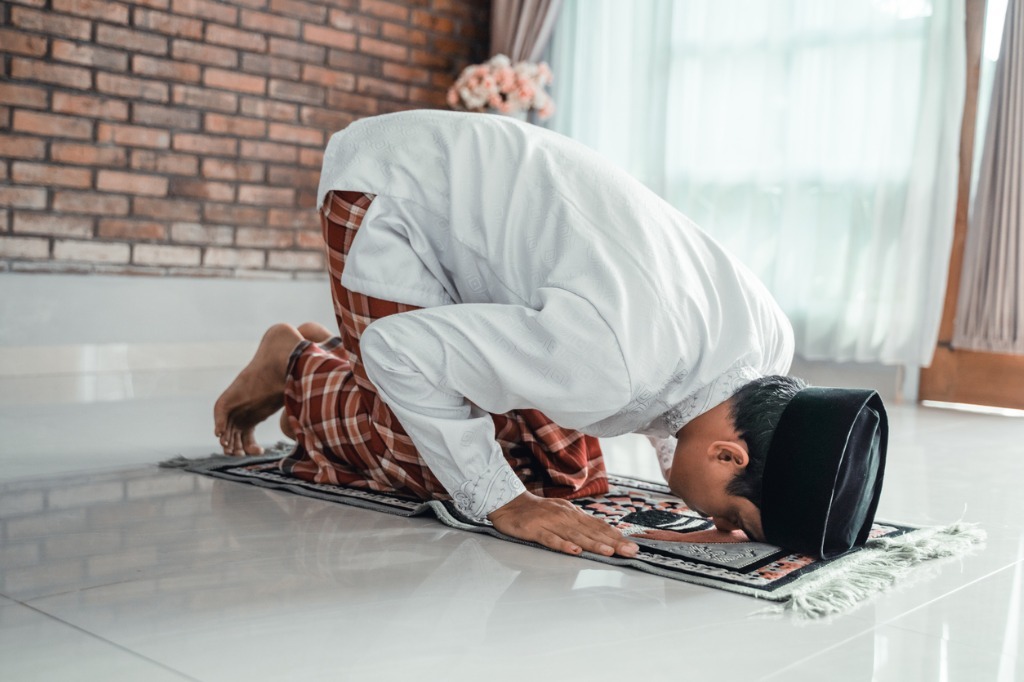

Sujud (Prostration)
Sujud, which refers to prostration, is an important step in your Maghrib prayer. During Sujud, you show total submission to Allah SWT by placing your forehead, head, and nose on the ground.
This posture is seen as a moment of humility and communion with the Almighty. Surprisingly, Sujud is not only about physical posture; it also holds enormous spiritual significance. It is a deeply spiritual act of surrendering yourself to Allah and expressing your devotion and humility before Him.
Prophet Muhammad PBUH has said that during Sujud, supplications (dua) are more likely to be accepted by Allah SWT.
“ أَقْرَبُ مَا يَكُونُ الْعَبْدُ مِنْ رَبِّهِ وَهُوَ سَاجِدٌ فَأَكْثِرُوا الدُّعَاءَ ”
The nearest a servant comes to his Lord is when he is prostrating himself, so make supplication (in this state).
It is a sunnah to say “Subhaana Rabbiy-Al-A’la” three times during sujood. Sunan an-Nasa’i 1046
The act of prostration in the Maghrib prayer serves as a reminder of our reliance on Allah SWT’s mercy and blessings.
In each rakat (cycle) of the Maghrib prayer, there are two sajdahs (prostrations). After completing these prostrations, we sit between them before rising for the next rakaat or concluding the prayer.
Sujud is a powerful symbol of devotion and surrender in our worship. It humbles us and reminds us of our insignificance compared to the greatness of Allah SWT. Through this act, we express our deep reverence and submission to Him, acknowledging He is the source of all blessings and mercy.
Sitting between Two Sujuds (Jalsah)
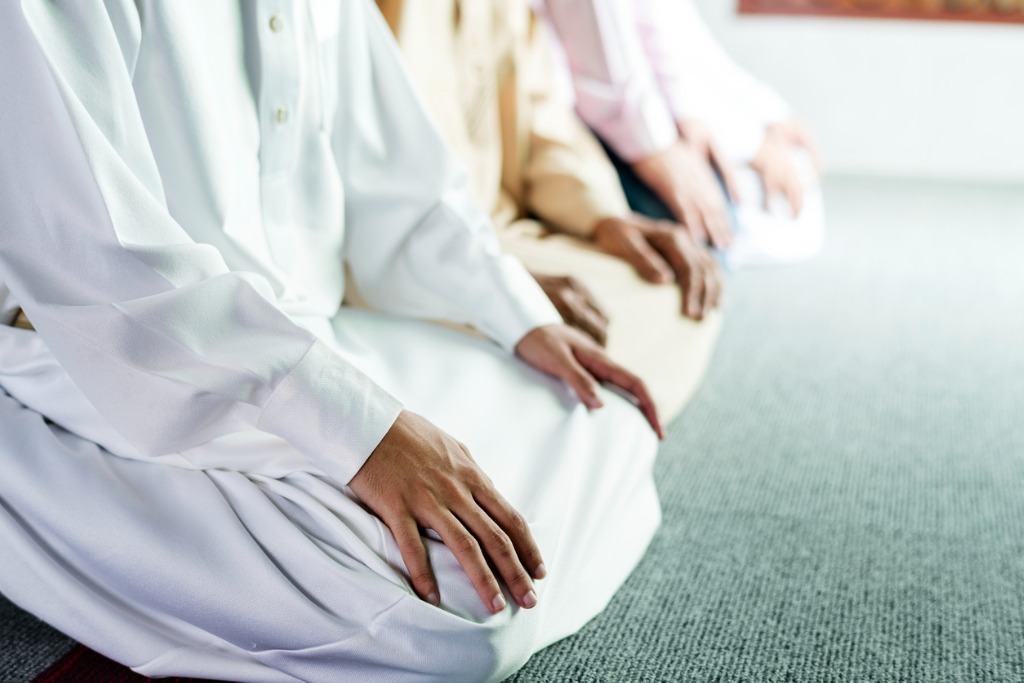

A significant part of your Maghrib prayer is sitting between two Sujuds. After completing the first prostration, you sit on your left leg, with your right foot upright and your toes pointing towards the Qiblah.
This posture allows for a moment of reflection and supplication. It provides you with a brief pause before moving into the second prostration.
Sitting between two Sujuds reminds you to use this precious time to seek forgiveness, express gratitude, or make personal duas (supplications) to Allah SWT. It’s a moment to connect with Him on a personal level and pour your heart out in prayer.
You may also recite “Rabbighfirli” twice during Jalsah as it is a Sunnah of the Prophet PBUH. Sunan an-Nasa’i 1069
Second Sujud and Preparation for Second Rakaah
You will again prostrate during the second Sujud of the Maghrib prayer. This is a humble position of submission to Allah SWT, where supplications are highly valued.
After finishing the second Sujud, rise to prepare for the second rakaah (unit) of the Maghrib prayer. Remember to quietly recite “Subhaana Rabbiy-Al-A’la” during both sujuds to glorify Allah SWT.
Maintaining focus and concentration as you move from one position to another is critical in ensuring that every movement is done with devotion and sincerity toward fulfilling this obligatory act of worship.
Qaada (Sitting for Tashahud)


After completing the second prostration (Sajda) in the second rakaat of your Maghrib prayer, comes the Qaada or sitting position. This is a crucial part of the prayer where you sit on your left leg with your right foot upright and your toes pointing towards the Qiblah.
In this sitting posture, you rest your hands on your thighs, close to your knees. It is in this position that you recite the Tashahud, which includes acknowledging Allah SWT’s oneness and sending blessings upon Prophet Muhammad PBUH and his family.
You have to Recite this: “At-tahiyyatu lillahi was-salawatu wat-tayyibat. As-salamu ‘alaika ayyuhan-nabiyyu wa rahmatullahi wa barakatuh” (All compliments, prayers, and pure words are due to Allah SWT. Peace be upon you, O Prophet, and the mercy of Allah SWT and His blessings). Sahih al-Bukhari 831
Rising for the Third Rakaat:
After completing the Tashahud, stand up and say Allahu Akbar to begin the third rakaat of the Maghrib prayer.
Remember to remain calm and focused throughout the prayer. The rising for the third rakaat represents the transition into the next phase of the prayer and the continuation of devotion.
Continuing the Third Rakah


Pray the entire Rakah as before, but after the second sujood, keep sitting and pray Tasahud and recite Durood-e-Ibrahimi and the following Dua:
Durood e ibrahimi: Alla Huma Salli Ala Muhammadiw Wa Ala Aali Muhammadin Kamaa Sallaita Ala Ibrahima Wa Ala Aali Ibrahima Innaka Hamidum Majid. Allahumma Baarik Ala Muhammadiw Wa Ala Aali Muhammadin Kamaa Baarakta Ala Ibrahima Wa Ala Aali Ibrahima Innaka Hamidum Majid. Sahih al-Bukhari 3370
The Du’a: Allahumma Rabbana atina fid dunya hasanah wa fil akhirati hasanah wa qina ‘adhaban nar” , Sahih al-Bukhari 4522
Tasleem (Salutation to end the prayer)
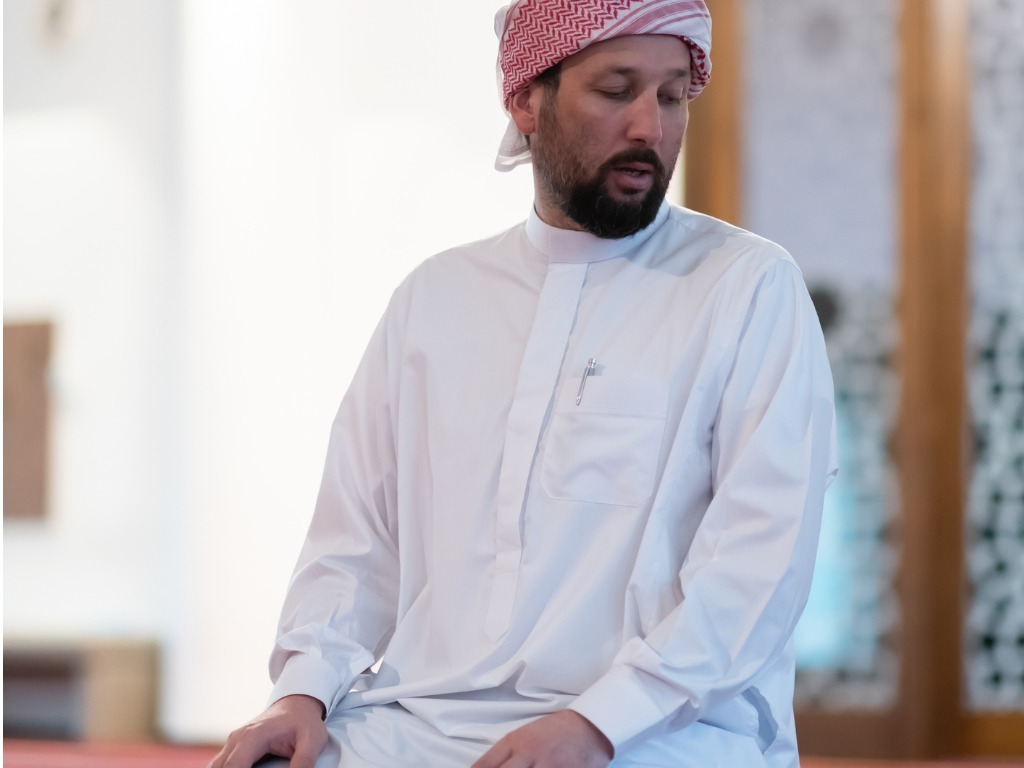

The Tasleem is the final step in your Maghrib prayer and serves as a salutation at the end.
After finishing the last rakat, you turn to the right and say, “Assalamu alaikum wa rahmatullah” (May Allah SWT’s peace and mercy be upon you). Then, you turn to the left and repeat this phrase.
This act represents spreading peace and blessings to all believers in your vicinity. The Tasleem indicates that your prayer has concluded, allowing you to go about your daily life knowing you have fulfilled your obligation to worship Allah SWT.
Conclusion
Performing the Maghrib prayer is an integral part of your Islamic faith. You can strengthen your connection with Allah SWT by understanding this prayer’s timing, preparation, and sequence.
Each step, whether reciting Quranic verses or bowing in reverence, holds spiritual significance and brings peace to your heart. Let us all strive to perform the Maghrib prayer with sincerity and devotion, embracing its beautiful rituals to approach our Creator. May it be a source of spiritual growth and a reminder of Allah’s presence in our lives.
FAQs
What is the Maghrib prayer, and when should it be performed?
The Maghrib prayer is one of Islam’s five daily prayers, held after sunset. It is the day’s fourth obligatory prayer.
Are there any specific supplications or dua’s to recite during the Maghrib prayer?
While no specific supplications or duas must be recited during the Maghrib prayer, you may make personal supplications between certain positions, such as after completing rukoo’ and before entering sujood.
Can women perform the Maghrib prayer at home, or do they need to go to a mosque?
Women can pray at home or in a mosque, depending on their personal preference and the availability of facilities. In Islam, either option is acceptable as long as proper cleanliness, modesty, and concentration are maintained during worship.
How long after Athan can you pray Maghrib?
- Muslims can pray Maghrib immediately after the adhan (call to prayer) for Maghrib has been announced.
- There is no specific time limit or delay between the adhan and praying Maghrib.
- It is recommended to perform the Maghrib prayer as soon as possible after hearing the adhan to receive its full reward.
- However, it is also permissible to delay praying Maghrib for a short period of time if necessary, such as due to unavoidable circumstances or completing essential tasks.
- It is important to note that intentionally delaying prayers without a valid reason is discouraged in Islam.
How do we pray Asr and Maghrib together?
It is not permissible to combine Asr and Maghrib. However, under certain circumstances, one can combine Zuhr and Asr & Maghrib and Isha.
Як виконувати молитву Магріб: вичерпний посібник з опанування молитви Магріб!
Якщо ви новачок у ісламі та цікавитесь, як правильно виконувати магрібську молитву, незабаром ви отримаєте всі відповіді. Молитва Магріб, одна з п’яти обов’язкових молитов, є невід’ємною частиною вашого щоденного розпорядку поклоніння. Цей вичерпний посібник спростить кожен крок під час молитви. До цього важливого знання лічені хвилини! Копаймо глибше.Розуміння магрібської молитви


Визначення Марокко
Термін «магріб» є важливим в ісламі, оскільки він походить від арабського слова, що означає «захід сонця». Це стосується не лише певного часу дня, але й однієї з ваших п’яти обов’язкових молитов. Ви повинні виконувати цю молитву на заході сонця, тобто в кінці дня. Основна мета магрибської молитви — нагадати мусульманам усього світу про їхні зобов’язання перед Богом.час молитви Альмагріб
Визначення точного часу для магрібської молитви має вирішальне значення в ісламській вірі. Загалом, четверта обов'язкова щоденна молитва або молитва починається незабаром після заходу сонця. На відміну від полуденної та денної молитви, які можна здійснювати протягом більш тривалого періоду часу, ми радимо вам виконувати магрібську молитву, як тільки пролунає заклик до молитви. Це єдина молитва, яка відбувається відразу після заходу сонця і має лише три раката. Ви можете використовувати астрономічний розклад, щоб визначити точний час заходу сонця для початку магрибської молитви. Цей метод поєднує запам’ятовування Корану з прив’язкою до ритму природи, що є фундаментальним принципом у ваших ісламських ритуалах і практиках очищення. Тому вам важливо розуміти час заходу сонця у вашому регіоні, щоб не лише дотримуватися релігійних протоколів, але й підтримувати глибокий зв’язок із Всемогутнім Богом через своєчасні молитви.Кількість ракатів в Марокко
Магрібська молитва, невід'ємна частина ісламської віри, складається з певної кількості рак'атів, які повинні виконуватися точно. Традиційно для західного намазу потрібно три раката. Магрібська молитва починається з двох добровільних ракатів, за якими слідують три обов'язкових раката. Ви можете збільшити свої духовні заслуги, розширивши свою молитву або намаз до п'яти або семи ракатів, додавши дві необов'язкові молитви Сунни після виконання обов'язкових частин. Ви повинні зберігати повагу та зосередженість протягом усієї послідовності та суворо дотримуватися цих кроків молитва Сунна Магрібу.Підготовка до магрибської молитви
Перед здійсненням магрібської молитви необхідно здійснити обмивання, вибрати відповідне місце для молитви, а також знати час здійснення магрібської молитви.обмивання


- Почніть обмивання, сказавши «В ім'я Бога» іТричі вимийте руки до зап’ястя. Сунан Абі Дауд 101
- Тричі прополоскати ротІ очистіть усі ділянки всередині нього.
- Очистіть ніздрі, тричі вдихнувши в них воду І винеси на вулицю.
- Вимийте обличчя від верхньої частини чола до низу підборіддя, від мочки вуха до мочки вуха, обов’язково охоплюючи всі ділянки.
- Вимийте руки до ліктів, починаючи з правої, а потім лівої руки.
- Витріть голову, змочивши руки і провівши ними всю голову відразу.
- Очистіть вуха, протираючи їх вологими пальцями, вказівним пальцем для правого вуха і великим пальцем для лівого вуха.
- وأخيرًا، اغسل كلا القدمين حتى الكعبين، بدءًا من القدم اليمنى ثم القدم اليسرى.
Час молитви Магріб
В ісламській вірі магрібська молитва виконується щодня в певний час, позначаючи кінець дня. Воно починається незабаром після заходу сонця і триває до тих пір, поки сутінки повністю не зникнуть. Час молитви Магріб залежить від вашого місця розташування та пори року. Як мусульманин, ви повинні використовувати розклад, щоб визначити точний час магрібської молитви, гарантуючи, що ви не пропустите цей життєво важливий обов’язок. Важливо розуміти, що поспішна молитва вважається гріхом в ісламі, тому приділяти час під час магрібської молитви дуже заохочується. Не забувайте виконувати його зосереджено та щиро, надаючи йому значення, якого воно заслуговує. Додаткова порада: ось веб-сайт, за допомогою якого можна знайти точний час молитви: www.prayetimes.orgНеобхідний одяг і місце для молитви
Іслам закликає одягатися скромно під час здійснення молитви Магріб. Чоловіки повинні прикривати пупок до колін, а жінки повинні прикривати все тіло, крім рук і обличчя. Носіння відповідного одягу під час молитви сприяє шанобливому та зосередженому оточенню. Місце молитви має бути чистим і вільним від забруднень. Під час молитви мусульмани шукають тихе і спокійне місце, де вони можуть дивитися в бік Кібли, у напрямку Великої мечеті в Мецці. Це забезпечує відчуття єдності з іншими відданими по всьому світу.Детальні кроки для здійснення магрібської молитви
Виконання магрібської молитви включає в себе кілька кроків, таких як початковий такбір і стояння, читання Корану, поклони, поклони, сидіння між двома поклонами і завершення привітанням. Читайте далі, щоб дізнатися, як правильно виконувати кожен крок і створити задовільну молитовну процедуру.Такбір стояти і стояти


читання Корану
У магрібській молитві, читання Корану Це має велике значення. Після завершення першого такбіру і вставання настав час читати аяти зі Священного Корану. Перед читанням Аль-Фатіхи та віршів Корану рекомендується прочитати початкову молитву, яка є Сунною Пророка Мухаммеда, хай благословить його Бог і мир йому. Вступне прохання: Слава Богу, і хвала Твоя, і благословенний дід Твій, і немає бога, крім Тебе, Слава Тобі, Боже, і хвалою Твоєю благословенне ім'я Твоє , і немає бога, крім Тебе, Всевишній, Твоя Величність. Немає бога, крім Тебе.) Сунан ан-Насаї 900Сура Аль-Фатіха є важливою частиною кожного раката магрібської молитви. Цей розділ відкриває двері для спілкування зі Всемогутнім Богом, визнаючи його роль Господа світів і просячи про керівництво на прямий шлях. Книга друга, хадис 172 Пророк Мухаммад, хай благословить його Аллах і мир йому, проголосив, що той, хто не читає суру Аль-Фатіха, його молитва є недійсною: «Хто молиться молитвою, в якій він не читає Матір Корану, то це передчасність - тричі - без завершення.” І той, хто молиться молитвою, в якій він не читає Мати Корану, вона є неповною [він сказав це. Тричі] і неповною. Сахіх Муслім 395a Крім того, важливо зберігати зосередженість, читаючи суру Аль-Фатіха та інші частини Корану під час молитви, і занурюватися в їх глибокий зміст.Стоячи на колінах (згинання)


Вставання з коліна
Закінчивши поклони, встаньте і скажіть: «Бог чує тих, хто славить Його». Продовжуйте тихо говорити «Господи наш, слава Тобі», що означає «Господи наш, слава Тобі». Посилання: Сунан ан-Насаї 1072، Сунан ібн Маджа 877Потім переходимо до прострації.
прострація
Суджуд, що відноситься до земного поклону, є важливим кроком у магрібській молитві. Коли ви падаєте ниць, ви демонструєте повну відданість Всемогутньому Богу, поклавши чоло, голову та ніс на землю. Це положення розглядається як момент смирення та спілкування з Богом Всемогутнім. Дивно, але прострація не обмежується лише фізичною поставою; Це також має величезне духовне значення. Це глибокий духовний акт віддання себе Богові та вираження своєї щирості та смирення перед Ним. Пророк Мухаммад (мир йому і благословення Аллаха) сказав, що під час земного поклону благання більш прийнятні перед Всевишнім Богом. «Найближче слуга до свого Господа, коли він падає ниць, тому благайте частіше». Найближче слуга до свого Господа, коли він падає ниць, тому благайте. Сахіх Муслім 482 Сунна сказати Скажіть тричі «Слава моєму Господу Всевишньому» під час ниць. Сунан ан-Насаї 1046 Падання ниць під час магрібської молитви є нагадуванням про нашу залежність від милості та благословення Всемогутнього Бога. У кожному ракаті магрібської молитви є два поклони. Після завершення цих поклонів ми сідаємо між ними перед тим, як піднятися до наступного раката або закінчити молитву. Прострація є потужним символом відданості та капітуляції в нашому поклонінні. Це принижує нас і нагадує нам про нашу нікчемність перед величчю Всемогутнього Бога. Цим вчинком ми висловлюємо свою глибоку пошану і покору Йому, визнаючи, що Він є джерелом усіх благословень і милостей.Сидячи між двома поклонами
Другий поклон і підготовка до другого ракату
Ви знову поклонитеся під час другого поклону магрібської молитви. Це скромне становище підкорення Всемогутньому Богу, де благання мають високу цінність. Після завершення другого поклону встаньте, щоб підготуватися до другого ракату магрібського намазу. Не забудьте тихо прочитати «Слава моєму Господу Всевишньому» під час двох поклонів, щоб прославити Бога Всемогутнього. Зберігання зосередженості, коли ви переходите з однієї позиції в іншу, має вирішальне значення для забезпечення того, щоб кожен рух виконувався щиро та щиро, щоб виконати це обов’язкове поклоніння.Молитва (сидячи за ташаххуд)


Стоячи на третьому ракаті:
Після завершення ташаххуду встаньте і скажіть «Аллаху Акбар», щоб розпочати третій ракат магрібської молитви. Не забувайте залишатися спокійними та зосередженими протягом усієї молитви. Вставання на третій ракат означає перехід до наступного етапу молитви і продовження богослужіння.Продовжуйте третій ракат


Таслім (привітання, що закінчується молитвою)
Висновок
Виконання магрібської молитви є невід'ємною частиною вашої ісламської віри. Ви можете зміцнити свої стосунки зі Всемогутнім Богом, розуміючи час, підготовку та послідовність цієї молитви. Кожен крок, чи то читання віршів Корану, чи то схиляння з благоговінням, має духовне значення та приносить спокій у ваше серце. Давайте всі прагнути звершувати магрібську молитву щиро і щиро, дотримуючись її прекрасних ритуалів, щоб стати ближче до нашого Творця. Сподіваємося, що це буде джерелом духовного зростання та нагадуванням про присутність Бога в нашому житті.поширені питання
Що таке магрібська молитва і коли її слід виконувати?
Магрібська молитва є однією з п'яти щоденних молитов в ісламі, і виконується після заходу сонця. Сьогоднішня молитва є четвертою обов’язковою молитвою.Чи є конкретні благання або благання, які вимовляються під час магрібської молитви?
Хоча під час магрібської молитви не обов’язково читати конкретні благання або благання, ви можете робити особисті благання між певними положеннями, наприклад, після завершення поклону та перед тим, як прийти в прострацію.Чи дозволено жінці здійснювати магрібський намаз вдома або вона повинна ходити в мечеть?
Жінки можуть молитися вдома або в мечеті, залежно від їхніх особистих уподобань і наявності зручностей. В ісламі будь-який варіант прийнятний, якщо під час богослужіння зберігаються чистота, смиренність і зосередженість.Через який час після заклику можна здійснювати магрібський намаз?
- Мусульмани можуть молитися Магріб Одразу після того, як оголошується заклик до молитви (Азан) для магрібської молитви.
- Не там Конкретний час або затримка Між закликом до молитви та магрібською молитвою.
- І це бажано Виконання магрібської молитви якнайшвидше Почувши заклик до молитви, щоб отримати його повну нагороду.
- однак, Дозволено також ненадовго відкласти магрібський намаз При необхідності, наприклад через обставини непереборної сили або для виконання важливих завдань.
- Важливо відзначити, що Навмисне затягування молитви без поважної причини в ісламі не рекомендується.

